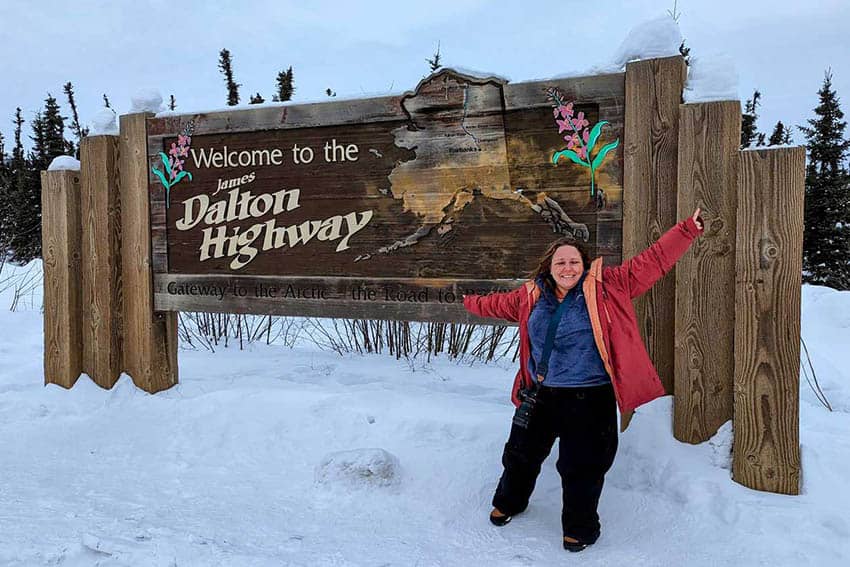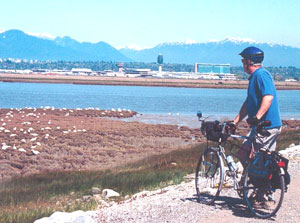
By Rick Millikan
Seeking a robust Vancouver adventure? Consider soft-pedaling nearby Richmond’s surrounding dikes! Enjoy 360-degree panoramas of majestic beauty along its friendly byways.
Cycling provides a great way to explore both its natural splendor and fascinating heritage. Dedicated benches provide rest, respite, and reflection. Take a picnic! Tables line these extensive greenways. Bathrooms provide doggie bowls for thirsty canine companions.
This scenic island circuit is easily accessible. If you’re without a bike, comfortable rentals are available in Richmond’s picturesque fishing community, Steveston. If cycling from Vancouver airport, riding best begins off Number Two Road.
Working River
Parking near Horseshoe Slough, my wife and I usually set out on Dyke Road. Following the main arm of the mighty Fraser, we watch this working river, busy with boats, barges, and ships.
Farmlands spread north toward the snowcapped coastal mountains. Just beyond Tilson/Gilmore Barn (1882) lies Finn Slough. Posted photos and hand printed pages explain how fishermen from Finland settled there over a century ago.

Finn Slough
Small gillnetters and motorboats lie ready in the backwater. Weathered clapboard homes, boat sheds, derelict net lofts, and a children’s day center perch around this marshy habitat. Majestic eagles sit atop surrounding cedars.
History Abounds
Hard-packed South Dyke Trail winds inland along fences sporting blackberry vines, around a box factory and into a riverside dog park. Cheery orange, yellow and blue canine sculptures welcome cyclists, day hikers and pet owners unleashing their amiable mutts for a frolic.
Meanwhile, fishermen patiently try their luck, casting out from the nearby pier. Silvery salmon leap and spin by during spawning season.
History abounds. Dyke Road passes the restored London Farmhouse (1906). Arriving in 1885, the Londons were first to build dikes and a farm on Lulu Island.
Sometimes stopping to scrutinize the profuse flower gardens, we snack at the picnic tables amidst the large lawn. Entering the refurbished home, we pass from room to room to “ooh” and “ah” turn-of-the-century furnishings.
On weekends afternoon tea is served in its exquisite dining room. Just beyond thriving cooperative vegetable patches stands McKinney House (1914). Built from plans ordered through a Sears Roebuck Catalogue, the newest owners moved their imposing Edwardian house there in 1993.

Waterfront Park Trail
Rebuilt London Landing provides a fishing float as well as views of Steveston Island and historic Cannery Channel. Within the adjacent BMX-park, dirt track stars entertain appreciative audiences.
Skirting fish processing plants and a colorful boat harbor, we view boardwalks connecting a heritage L-shaped cannery (1889) converted into Britannia Shipyard in 1917, timeworn residences, boat works, and Murikami Visitor Centre.
The restored home and boat sheds of the Murikami family reflect the industrious lifestyles of a burgeoning West Coast Japanese population.
From here a new attractive waterfront park trail enters the heart of Steveston. Shops, markets, galleries, and restaurants cluster around Steveston Landing. Whale watching tours leave from its public fish sales float.
Shaded under colorful umbrellas, we enjoy fish and chips or frozen yogurt at dockside tables. A block inland, Richmond’s first bank houses the historic fishing village’s museum. Constructed in New Westminster, the bank was floated to Steveston in 1906.
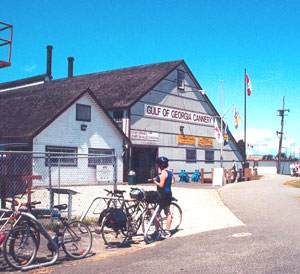
Nearby, Gulf of Georgia Cannery (1894) recreates a bygone era of West Coast fishing with engaging exhibits and ever improving tour programs. At the mouth of the Fraser, Garry Point Park presents spectacular views, beaches and breezy fields for kite fliers.
From Kuno (Japanese) Garden, a path encircles 39 grassy acres, passing the fishermen’s memorial sculpture and heritage Scotch Pond moorage.
Vintage Farmhouse
West Dyke Trail borders Sturgeon Banks, bustling from spring to fall with raucous red-winged blackbirds. Gulf Island panoramas unfold along 3.4 miles (5.5 km). The trail parallels a canal home for turtles, carp, ducks and blue herons.
Although manicured residences line most of the route, the vintage Steves’ family farmhouse remains beside pastureland where belted Galloway cattle contentedly graze. At the trail’s northern end, the thirty-five acre Terra Nova Natural Area provides field habitat for wintering owls and hawks.
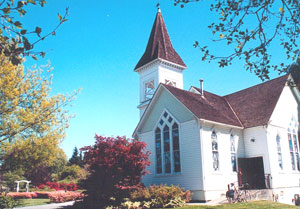
Newfoundlanders originally settled this area in 1890. Eastern roofs and side-bay windows distinguish five of their remaining homes near the mouth of the Fraser’s Middle Arm.
Middle Arm Trail
Cycling Middle Arm Trail atop the dike enables ideal viewing of diverse sea birds. On the opposite shore, Vancouver International Airport and the seaplane harbor swirls with “big bird” activity.
Before traveling under Number 2 Road Bridge, we turn southward taking the trail to Lynas Lane, which connects us to the wide bicycle lane along Granville Avenue.
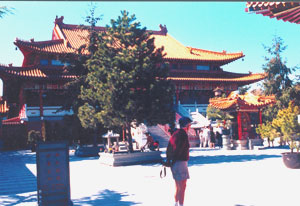
Minoru Park justifies a short detour north on Gilbert Road. Heritage trees grow throughout the park. Planted on what was once the Brighouse Estate, an American elm reaches 66 feet (20 m) high, 132 feet (40 m) wide at the crown.
Huge rhododendrons and varieties of lilies encircle the beautiful Minoru Lakes. Alongside these gorgeous gardens stands the island’s first church, Minoru Chapel (1891). Proud descendants of Richmond’s original settlers commissioned its spectacular stained glass windows.
Shell Road Trail
Turning southward off Granville, we pedal onto tree-canopied Shell Road Trail. Emerging into quiet neighborhoods, a paved Shell Road continues into a light industrial area.
At this road’s end, we meander woodsy Horseshoe Slough Trail, crossing wooden bridges over a marshy waterway, soon arriving back at our car. Our circuit embraces 21 miles (32.5 km) of flat, intriguing terrain.
If undaunted by traffic, consider two other fascinating starting points or further side trips. Shell Road accesses the one hundred acre Richmond Nature Park via Westminster Highway. A natural bog environment can be studied inside its rustic nature house, and experienced on trails and boardwalks through peat bogs that once covered more than 25 per cent of Richmond.

Stunning Buddhist Temple
Number Four Road from Finn Slough links a stunning Buddhist Temple along Steveston Highway. Being shaped like the tongue of the dragon, this island has attracted a sizable Chinese population considering it a most fortunate location.
One of Richmond’s two Buddhist temples, this site features a wistfully landscaped garden simulating Buddhist paradise. Here statues of the Buddha and his disciples peacefully reflect upon our roads to enlightenment.
Take a Richmond soft pedal! Almost all 50 miles (80 km) of dikes surrounding Lulu Island have been paved as quiet rural roads or developed as recreational trails. Whether new to cycling or out-of-shape, two-wheelers readily enjoy exploring this beautiful and very historic island city!

Rick Millikan widely publishes cycling adventures, writes a bicycle column for Adventure West and contributed two ‘cycle logical’ stories to an anthology titled Traffic Life.
- The Wild Mississippi: 2340 Miles Across Ten States - April 8, 2024
- Exploring the Floating Villages of Tonle’ Sap Lake - April 3, 2024
- Woman Traveling Solo on Turkish Buses - March 27, 2024


